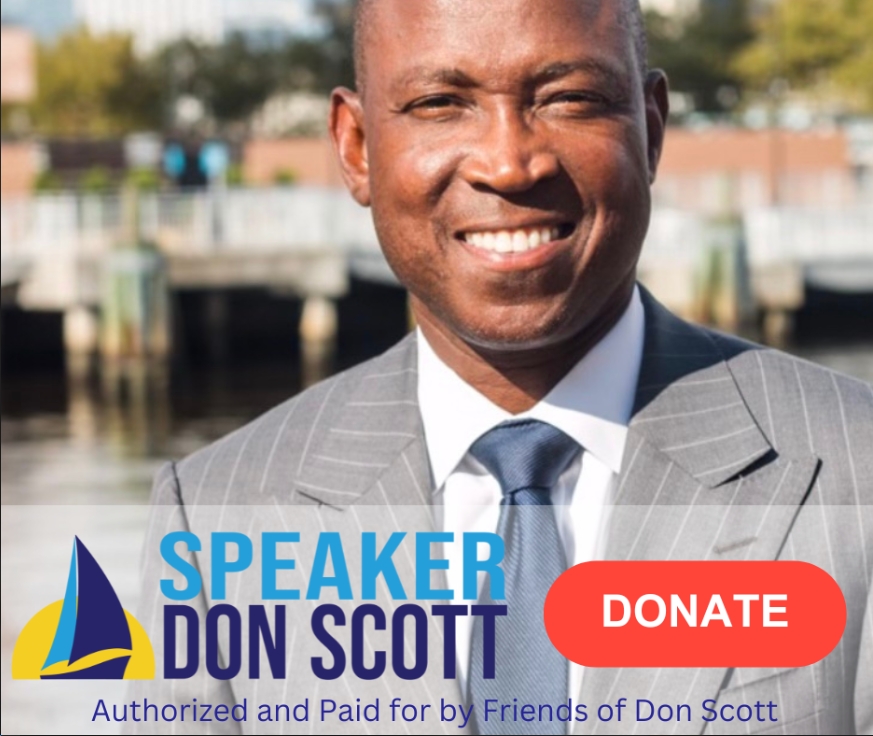On Friday I attended ceremonies at the Smithsonian’s Baird Auditorium honoring Greg Mortensen as the 2010 recipient of the Benjamin Franklin Creativity Laureate Prize jointly awarded by the Smithsonian Associates in collaboration with the Creativity Foundation. Each person who attended the ceremony received a free copy of Mortensen’s new book, Stones into Schools: Promoting Peace with Books, not Bombs, in Afghanistan and Pakistan. The author stayed after the event to sign copies for as many as were willing to stand on line, then came to a reception in his honor at the Cosmos Club, where I was fortunate enough to briefly speak with him.
Much of my Saturday was spent reading the book, which has a foreward by Khaled Hosseini, the author of The Kite Runner and A Thousand Splendid Suns.
This diary is not a book review, but rather a response. I will explore some parts of the books that spoke to me. Then I will offer my response.
I invite you to keep reading.
I want to begin with a quotation from that foreword by Khaled Hosseini:
Greg’s philosophy is not complicated. He believes quite sincerely that the conflict in Afghanistan will ultimately not be won with guns and air strikes, but with books, notebooks, and pencils, the tools of socioeconomic well-being. To deprive Afghan children of education, he tells us, is to bankrupt the future of the country and doom any prospects of Afghanistan becoming a more prosperous and productive state.
This is true, and those who know of Mortensen’s work know of his especial concern for the education of women, quoting, as Mortensen himself does, an African proverb “If you educate a boy, you educate an individual, but if you educate a girl, you educate a community.” Immediately after this comes the following:
Lastly, Greg has done all this with charm, grace, patience and unfailing humanity.He has listened carefully, built relationships with village leaders based on trust and respect, and involved people in shaping their own future. He has taken the time to learn the local culture – courtesy, hospitality, respect for elders – and to understand and appreciate the role Islam plays in people’s daily lives.
When I read those words from Husseini I immediately thought of the tasks of a community organizer, a concept to which I found myself returning repeatedly as I read Mortensen’s own words.
Friday night, in the conversation Mortensen had as part of the ceremony, he emphasized the importance of people taking ownership, that it was not so much that he and his organization, the Central Asia Institute (CAI), built the schools, for they did not. They provide funds and some logistic support. His in country personnel, in both nations, provided the real leadership, and they, too learned to listen to the locals. Those locals were hungry for education for their children, especially their daughters. The effect of educating females is profound: educated mothers resist their children serving as participants in militant jihad as propounded by the Taliban and similar groups. As Mortensen notes, rural women have two most common requests: “We don’t want our babies to die, and we want our children to go to school.” The epigram to his Prologue makes this clear, as he quotes Nobel Peace Laureate Aung San Suu Kyi:
The education and empowerment of women throughout the world cannot fail to result in a more caring, tolerant, just and peaceful life for all.
A community organizer has to believe there is something to respect in the culture of those he seeks to help. Mortensen writes often of the hospitality and warmth of the people he encountered in both countries. He also has developed an appreciation for Islam as a culture, regardless of the material wealth or lack thereof of any group of Muslims, shown in words like these:
Islam is also the framework of a civilization created by the community of Muslim believers – a framework that includes not only simply theology but also philosophy, science, the arts, and mysticism. Wherever Islamic civilization has achieved its fullest and most beautiful levels of expression, it has done so in part because its leaders permitted the societies over which they ruled to be enriched by tolerance, diversity, and an abiding respect for both the divine and the human. By deliberately seeking to destroy this tradition, the Taliban – like many other contemporary Islamic fundamentalist groups – abandoned this message of the Koran to build a society that is just and equitable, and whose rulers are directly responsible for the welfare of all their citizens.
The very title of this book comes not so much from Mortensen as from the Afghanis themselves. The words came from a local Commandhan, Sadhar Khan. It is worth quoting the passage from which the title comes. Khan talked about the devastation of the region for which he was responsible, around the town of Baharak and the Wakhan and across the region of eastern Badahshan. We read on page 92
He spoke of the destruction that had been wreaked over the course of two wars – the first against the Soviets, and the second against the Taliban – and how much rebuilding needed to be done.
“Look here. Look at these hills,” he said as he pointed toward the mountains looming over the town, whose lower slopes were strewn with countless rocks and boulders. “There has been far too much dying in these hills. Every rock, every boulder that you see before is one of my mujahadeen, shadids, martyrs, who sacrificed their lives fighting the Russians and the Taliban. Now we must make their sacrifice worthwhile.”
He turned to me with a look of fierce determination. “We must turn these stones into schools.”
Later we encounter this warrior/leader sitting quietly on a rock with water flowing by. He tries to explain why to Mortensen, He says “Sitting here watching the water rush past is the only way that I can justify having gone to war. The reason that I fought the Soviets and then the Taliban was for moments such as the one we’re having right now. Unless you have been inside the fire of a battle, this is something that you will never understand.
Later Khan would write poem to try to explain, of which Mortensen offers a translation from the Dari. Reading these words from the Afghani helped me to realize how deeply Mortensen understood the importance of allowing those he was assisting to take ownership of the effort, an effort which had to be based upon THEIR vision. Allow me to share that poem:
You wonder why I sit,
here on this rock,
by the side of this river,
doing nothing?
There is so much work to be done for my people.
We have so little food,
we have so few jobs,
our fields are in shambles,
and still there are land mines everywhere.
So I am here to listen to
the quiet,
the water,
and the singing trees.
This is the sound of peace
in the presence of Allah.
After thirty years as a mujahadeen,
I have grown old from fighting.
I resent the sounds of destruction.
I am so weary of war.
To me one of the most important aspects of the book is that Mortensen hears, listens to the voices of children.
Let me offer two examples.
Readers may know that on October 8, 2005, Northeastern Pakistan was devastated by a 7.6 earthquake. As Mortensen writes,
Satellite photos would later reveal that the quake had triggered 2,252 landslides, according to two American seismologist. Within a ten-mile radius of the town of Patika, there wasn’t a single hospital bed, working telephone, or drop of municipal drinking water. The death toll according to the U. S. Geological Survey would eventually exceed eighty-six thousand, qualifying it as the worst natural disaster in the history of Pakistan, and the twelfth most destructive earthquake of all time.
Haiti may since have pushed the devastation in Pakistan down to 13th all-time. But this was further away, much less accessible than an Island to which we could deploy ships in a few days’ time. Even before the quake much of the region was difficult to access, lacking modern infrastructure.
Almost a quarter of those who died were school children. Many were killed when their schools collapsed. And it is this which brings me to my first example. Mortensen did not arrive on the scene until several months after the quake. To this point, the only outsiders who had come were the crews of American Chinook helicopters which had been diverted from the war in adjacent Afghanistan to provide emergency assistance through their airlift capacity. He and his local person spent time consulting with local elders
in order to find out what they thought they needed. In a way, even though we had come into this stricken valley in order to build schools and promote education, we were inviting the people of the area to beome our teachers.
Again, I was in reading these words reminded of the task of the community organizer, who is there to help the people move towards the goals they have decided are important. As Mortensen writes,
When you take the time to actually listen with humility, to what people have to say, it’s amazing what you can learn. Especially if the people who are doing the talking also happen to be children.
Mortensen then describes trying to get the children of one community to talk about the horrible events of the earthquake, which the locals have come to call Qayamat, an Urdu word for “apocalypse.” One young lady, Farzana, will finally be the one to speak. That leads to one of the more remarkable exchanges in the book. Mortensen had been wondering why so few children had returned to the schools that were being set up in tents, and Farzana responds
“Because there are no desks in the tents,” she said matter-of-factly.
. Mortensen at first considers this a strange reason, which leads to the rest of the exchange
“Why are desks so important?” I asked.
“They make children feel safe,” she explained. “And with desks, the tents feel more like a real school.”
This seemed to make sense, and I nodded, but she wasn’t finished.
“But even if the classes are held outside, you should have the desks outside, too, ” she said. “only then will the children come to class.”
Sure enough, when Mortensen and others managed to rescue and refurbish some desks from the rubble, the students began to return. And as he notes “And more important, perhaps, it was something that had been initiated by the children themselves.”
The other exchange came in conversation with his daughter Amira:
“Hey, Dad,” she asked, “what kinds of games to the children in your Kashmir schools play?”
Mortensen didn’t know, and as the conversation continued we encounter the following:
“Dad, you don’t have playgrounds at all in your schools do you?”
“No,” I admitted. Playgrounds had not exactly been at the top of the priority list for Sarfraz and me.
“You really need to put them in,” she declared. “all children need to play, especially ones that are suffering and hurting like kids in Pakistan.”
Mortensen followed her advice, and concludes this chapter by recounting when a group of local elders who sympathized with the Taliban visited a school in which a playground with swings, seesaws and slides had been installed, they put down their weapons, smiled, and then announced they did not need to go into the school.
“But don’t you want to take a look at the classrooms?” asked the principal.
“No, we have seen enough,” replied Haji Mohammad Ibrahim. “we would like to formally request you to come to our village in order to start building schools. But if you do they absolutely must have playgrounds.’
Before I had read the book, in my brief conversation with Greg Mortensen, I was responding at that point on having read his first book, having read about him, and having listened to him that evening. I told him that my sense was that there were things from his experience that I thought were relevant to the educational crisis in this nation.
Little did I know how true my statement was.
I want to start with his daughter’s observation about the need for games, for playgrounds. I teach in a high school. For most of our students, their day officially begins with morning announcements at 8:25 and ends 8 periods later at 3:05. During that expanse they have one of the eight periods for lunch, and five minutes between periods, during which time they may have barely enough time to get from one end of the building to another: we have over 2,800 students in a building designed for far less. I think we have 21 outside ‘temporary’ classrooms that might provide additional classroom space, but the additional students still have to traverse hallways and stairways designed for far fewer. We have to run 5 lunch periods. The students have little time to unwind, to transition from one subject to enough, to spend any time being kids. They may go several years with no physical education classes, since the amount of same required for graduation is so minimal. Somehow I think Amira Mortensen is wiser than those who design school buildings and schedules such as that in which I spend my working hours. Perhaps were we to listen to our young people, we might realize that we need to redesign how we deliver instruction, not merely within the classroom, but in terms of the overall school setting, in the unrealistic and perhaps even inhuman pace at which we push our adolescents.
Listening to them – it is, after all about their education. Certainly, as I teacher I try, against which i have to balance the responsibility I have to prepare them for the external tests that carry such increasing (and in my opinion improper) weight, for them and for the school.
Then I pull back to the larger picture of educational policy, which increasingly is becoming something being imposed externally, without the voices of students, of teachers, of the communities in which the schools are located.
And then I remember something: our President started his work career as a community organizer.
Perhaps now you realize why I kept returning to that imagery as I read this book.
It is not that the Obama campaign was totally bottom up. He had a vision, but he also perceived how it connected with the aspirations of a large number of people in the nation, and provided the framework in which those aspirations could be expressed, and thus the people felt like it was their campaign.
This is not dissimilar what from Mortensen has done in his work with helping people build schools.
And it is what is totally lacking in our current national approach to our educational policy.
Had Mortensen approached his task the way this administration is approaching education, he would have failed miserably.
The American military has learned from Mortensen. His first book became required reading for those dealing with counter-insurgency. Admiral Mike Mullen is on record as saying we cannot bomb our way to victory. His wife gave him Three Cups of Tea to read. Later Mullen would fly in for the dedication of a school in Afghanistan, bringing the press with him, and spending much time with the children in the school.
As I read this book I regularly found myself at the point of tears. I suspect many who read it will experience something similar.
There is much to admire in what Mortensen and his co-workers have achieved. The greatest victory has been empowering the people in the communities in which he and CAI have worked. That in itself is an important part of my concept of education.
He has done so in part by functioning in the way one would expect of a good community organizer.
Barack Obama used to be a community organizer.
Perhaps he should remember what that is like. And then maybe, just maybe, he can learn something from Greg Mortensen.
What I’ve learned.
Which is that if he truly wants to help change our schools in a meaningful way, he should remember how a community organizer operates.
First he listens. To those he wants to help. Which in this case would mean listening to the students, the teachers, the communities.
That is one important part of my response to reading this book.
It is not the only one.
It is the one with which I wished to start.
And as I have with my volunteering in dental triage, I think this diary will not be the only time I visit the contents of this book, which I do urge you to read.
Peace.
 I agree with the following statement, it’s time to stay focused and get clean energy/climate change legislation done. Now. The planet can’t wait any longer, nor can our energy security or our economy.
I agree with the following statement, it’s time to stay focused and get clean energy/climate change legislation done. Now. The planet can’t wait any longer, nor can our energy security or our economy.

 The media loves pretending to challenge “the conventional wisdom”. That must explain why the Washington Post Outlook section seems so fond of its regular feature, “5 Myths About [fill in the blank]”, in which a designated scholar appears to debunk some pesky myths that deserve to be deflated. But this feature is not what it seems, and it most certainly is not performing a public service. Here, in a style that the WaPo might understand, are 5 myths about this ridiculous weekly feature:
The media loves pretending to challenge “the conventional wisdom”. That must explain why the Washington Post Outlook section seems so fond of its regular feature, “5 Myths About [fill in the blank]”, in which a designated scholar appears to debunk some pesky myths that deserve to be deflated. But this feature is not what it seems, and it most certainly is not performing a public service. Here, in a style that the WaPo might understand, are 5 myths about this ridiculous weekly feature:



![Rep. Eugene Vindman (D-VA07) Has Mostly Been Excellent So Far, But Being One of “35 House Democrats [Who] Joined Republicans Against a Major Climate Policy” Is Not Cool. At All.](https://bluevirginia.us/wp-content/uploads/2025/05/nytcalifornia-100x75.jpg)
